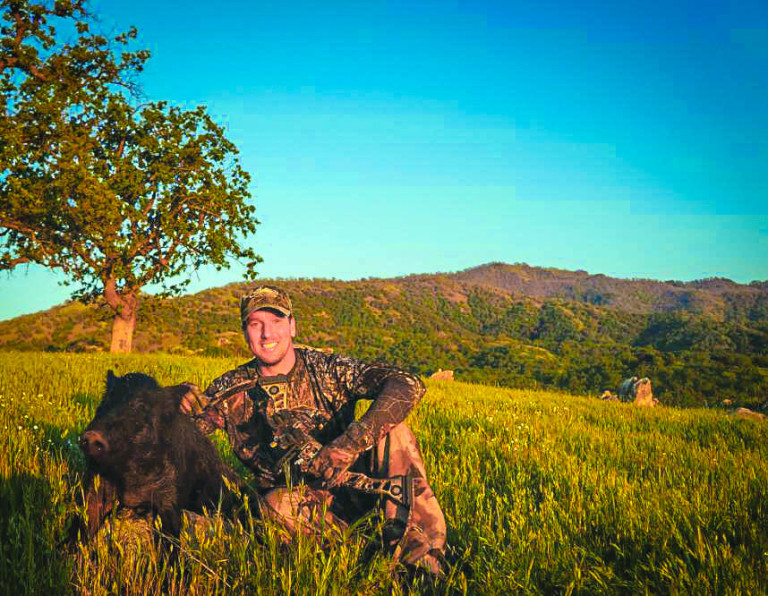
Hunting Over Alfalfa?

by Carrie Wilson
6-15-2017
Website
Question: I know it’s illegal to bait animals to get them to come to you in order to hunt them. However, what about hunting over an alfalfa or corn field? I know some other states allow this and I am wondering if California does, too. (Dakota C.)
Answer: Although feeding big game and hunting over bait is illegal in California, it is legal to hunt over a standing or harvested alfalfa or cornfield. While it is generally prohibited to take resident game birds and mammals from “any area where shelled, shucked or unshucked corn, wheat or other grains, salt, or other feed whatsoever capable of luring, attracting, or enticing such birds or mammals is directly or indirectly placed, exposed, deposited, distributed, or scattered…” (California Code of Regulations Title 14, section 257.5), this regulation includes several exceptions. One exception allows the “taking of resident game birds and mammals on or over standing crops, flooded standing crops (including aquatics), flooded harvested croplands, grain crops properly shocked on the field where grown, or grains found scattered solely as the result of normal agricultural planting or harvesting.”
Catch and release in MPA
Question: Is it legal to fish catch and release in a no-take State Marine Conservation Area (SMCA) Marine Protected Area (MPA) such as Big River SMCA? Nothing is mentioned in the California Ocean Sport Fishing Regulations booklet. (Robert J.)
Answer: No, it would not be legal to catch and release inside a no-take SMCA or MPA because “take” means to “hunt, pursue, catch, capture or kill, or attempt to hunt, pursue, catch, capture or kill” (Fish and Game Code, section 86).
Why not able to purchase license and harvest report cards together?
Question: I purchase a California fishing license every December for the following year. Then in May I purchase an abalone report card. And then in September I purchase a lobster report card. I purchase all of these online, which is convenient. Still, it’s three transactions I have to remember and three postage charges. Why can’t I purchase my fishing license and harvest report cards in one transaction? (Ben W.)
Answer: Sport fishing licenses and all sport fishing license items become available for purchase on Nov. 15 each year, except for abalone and lobster report cards. While abalone and lobster report cards are not available for sale at the beginning of the year, you do not have to pay for postage on items purchased through the Online License Sales and Service, unless you select expedited shipping.
Abalone Report Cards become available for purchase on March 15. Abalone regulation changes, based on data gathered from the previous year, frequently require changes to the Abalone Report Card. The March 15 date for the start of sales for Abalone Report Cards allows time for changes to be made to the report card and still allows the report card to be available for purchase 45 days prior to the first day of abalone season. For example, the seasonal limit for abalone recently changed from 18 to 12. Therefore, changes were made within the Automated License Data System to reduce the number of lines printed on the report card and the number of abalone tags included with the report card to 12.
Spiny lobster season spans a part of two calendar years and the report card is valid for the entire lobster season. The upcoming lobster season opens Sept. 30, 2017 and closes March 21, 2018. If Spiny Lobster Report Cards for the 2017/18 season were available at the time 2017 sport fishing licenses first became available for sale (Nov.15, 2016), they would have been available for purchase during the 2016/17 lobster season. It is likely that many people would accidently purchase a spiny lobster report card for the wrong year.
Abalone shell pieces for jewelry?
Question: I realize it is illegal to sell abalone shells as jewelry or other artwork if obtained while sport diving under California regulations, but what if the abalone shells or pieces of them are found while beach combing and the shell had already been vacated by natural means? Can these shells be made into jewelry since there is no limit on taking these shells or pieces? (Scott E., Walnut Creek)
Answer: You can generally pick up abalone shells and shell parts for your personal use. However, Marine Reserves, Marine Protected Areas and other prohibited areas do not allow for any shell collecting. Wherever you go, you should contact the controlling agency to find out what collecting activities are legal for that area. As long as the shells are legally obtained and not sport-taken, they can be used to make jewelry that is sold.
Carrie Wilson is a marine environmental scientist with the California Department of Fish and Wildlife. While she cannot personally answer everyone’s questions, she will select a few to answer each week in this column. Please contact her at CalOutdoors@wildlife.ca.gov.
Website Hosting and Design provided by TECK.net